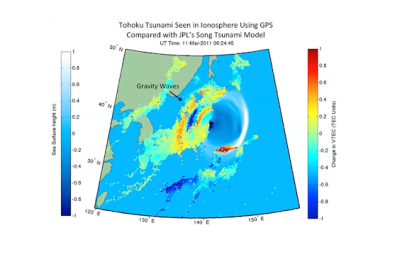Scientists at the U.S. National Aeronautics and Space Administration (NASA) are testing a novel approach to detect tsunamis by the rumble they make in the atmosphere.The new hazard-monitoring technology, called GUARDIAN (GNSS Upper Atmospheric Real-time Disaster Information and Alert Network), uses GPS signals to go wave-hunting in the Pacific Ring of Fire. The new system sifts the signals for clues that a tsunami has arisen somewhere on Earth. GUARDIAN’s long-term objective is to augment early warning systems.
The technology is still maturing, and GUARDIAN’s near-real-time output must be interpreted by experts trained to identify signs of tsunamis. But already it is one of the fastest monitoring tools of its kind: within 10 minutes it can produce a kind of snapshot of a tsunami’s rumble reaching the ionosphere. And it could potentially provide as much as an hour of warning, depending on the distance of the tsunami origin from shore.
To read more on GUARDIAN’s use of data from clusters of GPS and other wayfinding satellites orbiting Earth, click here.
Main image: Picture showing how waves of energy from the Tohoku-Oki earthquake and tsunami of March 11, 2011, pierced Earth’s ionosphere in the vicinity of Japan, disturbing the density of electrons. These disturbances were monitored by tracking GPS signals between satellites and ground receivers. © NASA/JPL-Caltech

